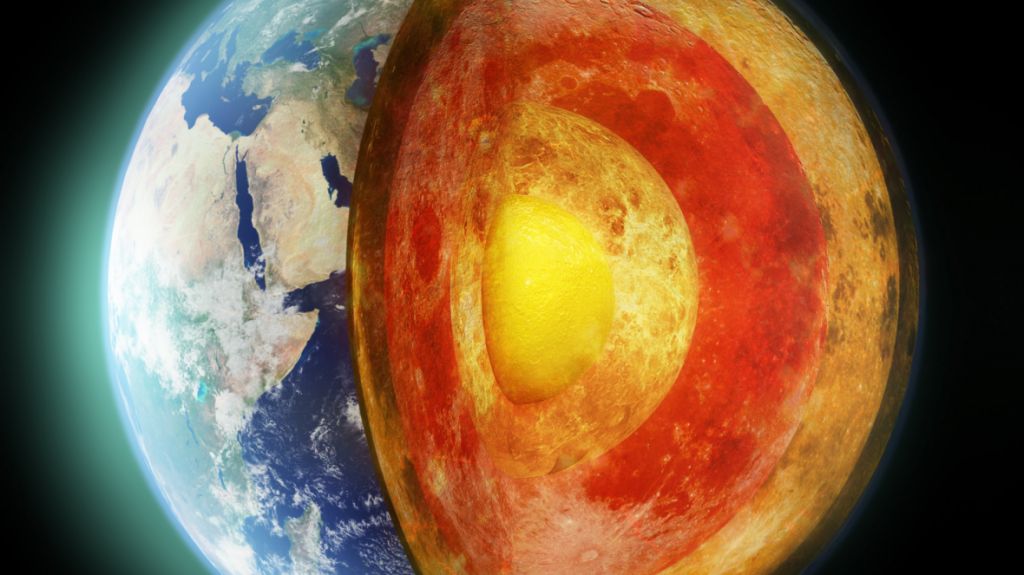Sagittarius A in the Milky Way
In the spiral arms of the Milky Way, the magnetic lines of force are broadly aligned with the galaxy as a whole, but closer up they may actually lie in quite different places, for example because of supernovae and stellar winds.
Galactic magnetic fields are extremely weak, about a hundred thousand times weaker than the Earth's own magnetic field. However, over long periods of time, weak magnetic fields also accelerate gas and dust in interstellar space, which explains the existence of some stellar nurseries - star-forming regions - that cannot be explained by gravity alone, and which also seem to require a magnetic force to form stars.
Mapping magnetic fields in our galaxy can help us to better understand the nature and evolution of the Milky Way and other galaxies.
High-energy emissions have been measured from a nearby supermassive black hole.
The Perseus A black hole at the centre of the lensing galaxy NGC 1275.
Astronomers have used the Event Horizon telescope to study an active supermassive black hole at the heart of the Perseus A galaxy. The instrument also spotted a battle between gravity and magnetism.
Astronomers have observed a supermassive black hole (on an intergalactic scale) almost next door, shooting jets of matter at close to the speed of light. These outflows reveal a battle between magnetism and gravity. The discovery could help scientists better understand how black holes feed on matter. And of course how they shoot out powerful beams of radiation, that reach far beyond their galaxy. The team used the Event Horizon Telescope (EHT) to make observations at the heart of the radio galaxy 3C 84, also known as Perseus A.
The region is powered by an active supermassive black hole. The EHT took the first images of a black hole ever seen by mankind. The strong source of the radio waves is Perseus A, the centre of the active galaxy NGC 1275, the central galaxy of the Perseus supercluster, 230 million light years from Earth. This may sound like a huge distance, but the object we are observing is one of the closest supermassive black holes to our planet.
"The radio galaxy 3C 84 is particularly interesting because of the challenges in detecting and accurately measuring the polarisation of light near the black hole," said Jae-Young Kim, a member of the research team and associate professor of astrophysics at Kyungpook National University in South Korea, in a statement announcing the discovery. The magnetic magic of a black hole. It is not the first time that EHT has investigated the strong magnetism or gravity of a supermassive black hole, two of the four fundamental forces of the universe. After the telescope first imaged the supermassive black hole at the heart of the Messier 87 (M87) galaxy, it also mapped the polarisation of light around the 6.5 billion solar mass black hole. This work revealed details of the polarisation magnetic fields around the central black hole of M87. And in the new study, EHT also observed polarisation around Perseus A, suggesting an ordered magnetic field in its immediate vicinity. These magnetic fields prove their strength by overcoming the massive gravity of the black hole, which is estimated to be 40 million times the mass of the Sun. In doing so, they also launch high-speed radiation into space.
According to Georgios Filippos Paraschos, group leader of the Max Planck Institute for Radio Astronomy (MPIfR) in Germany, the discovery could answer many questions.
"Our new results provide new evidence for an ordered magnetic field in the heated gas surrounding the black hole."
Magnetism or gravity?
When matter falls towards the black hole, it forms a strongly magnetic, so-called "accretion disk" around the object. As this disk rotates, the magnetic field lines inside it twist, coiling up tightly, preventing the efficient release of magnetic energy.
The fast-rotating Perseus A observations of the supermassive black hole and the magnetically confined disk around it suggest that the black hole's rotational speed may be related to its ability to launch beams of radiation.
This implies that while these beams represent the dominant magnetism over gravity, they can be assisted by external intervention from gravity.
A deeper investigation and the application of Einstein's 1915 theory of gravity, general relativity, may help to determine whether this is indeed the case. "Why are black holes so good at producing strong radiation? This is one of the most exciting questions in astrophysics," said Maciek Wielgus, a researcher at MPIfR. "We expect that general relativistic effects above the event horizon of the black hole could be the key to answering this question. Such high-resolution observations will finally open the way to empirical verification."
EHT could be a useful tool to answer this question. EHT can provide in-depth observations of the black hole and its radiation using a technique called interferometry (VLBI). This allows a picture to be formed by comparing signals from many telescope observations of the same object.
In my own imagination, I have often thought about how the black hole could be examined from the inside. Such a possibility came up to cause an explosion next to the accretion disk of the black hole, or to observe an explosion instrumentally, and the shock wave hitting the black hole, by wavering its surface and thereby inferring the properties of the matter inside it from the propagation and reflection of the waves that enter the black hole.













